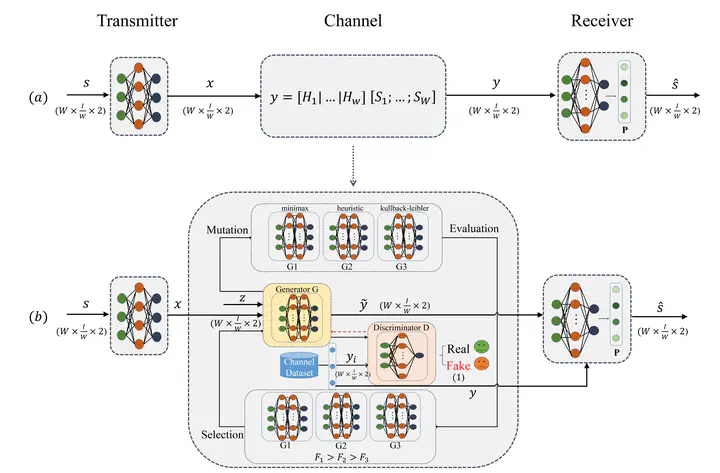Evolutionary generative adversarial network based end-to-end learning for MIMO molecular communication with drift system
 The whole network.
The whole network.Abstract
Molecular communication (MC) is a novel paradigm for nano-communication networks. Compared with diffusion-based single-input single-out (SISO) systems, multiple-input multiple-output (MIMO) MC with drift systems can effectively mitigate the negative effects of inter symbol interference (ISI), inter link interference (ILI) and noise, further improving transmission efficiency. The modeling complexity of MIMO MC systems inspires the application of deep learning (DL) techniques to establish end-to-end architectures for signal recovery. However, training of the entire end-to-end system is limited by the unknown channel and small training sample size. In this paper, aiming at signal recovery of the newly developed mathematical MIMO MC with drift system model, a Kullback–Leibler divergence (KLD) evolutionary generative adversarial network (EGAN)-based end-to-end learning method is proposed. The end-to-end architecture can be trained offline with both the sampled and fake signals generated by KLD EGAN, even with a small training sample size, and then used to recover online transmitted signals directly. Besides, two traditional detection algorithms denoted as the maximum a posterior (MAP) detector and fixed threshold (FT) detector, are proposed as well for theoretical comparison. Experiments of the effect of different model parameters on the system performance have been carried out. Results validate the effectiveness and robustness of our proposed method compared to other DL-based methods, including the deep neural networks (DNN)-based, the original GAN-based, and the original EGAN-based, in terms of transmission accuracy.
Supplementary notes can be added here, including code, math, and images.